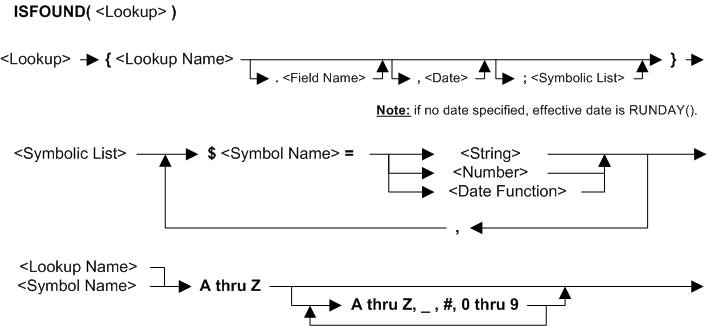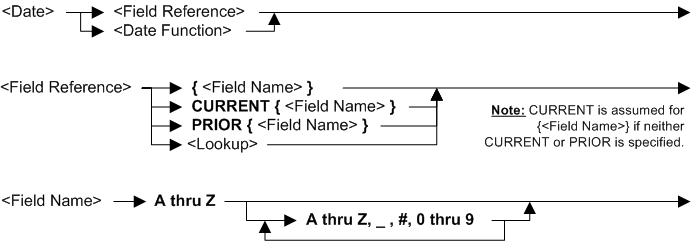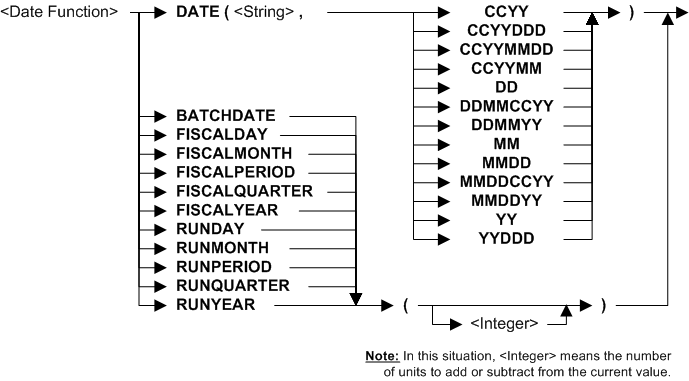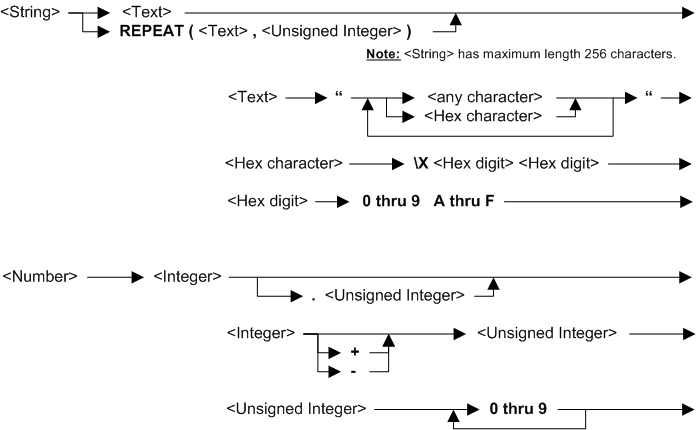Function ISFOUND
TABLE OF CONTENTS
- How do I use ISFOUND?
- Syntax
- Rules for the syntax
- Examples: ISFOUND function in ERF
- Examples: ISFOUND function in ECL
How do I use ISFOUND?
The ISFOUND function tests the lookup path to see if a record exists for the target, given the current source record.
ISFOUND returns true if the lookup path is found for the current source record, and false if the lookup path is not found.
You can provide an effective date, and symbols, if required. No target field name is specified as a field is not returned.
ISFOUND can only be used in Extract Record Filter (ERF) and Extract Column Logic (ECL) text.

Syntax




Rules for the syntax
ISFOUND can only be used in Extract Record Filter (ERF) and Extract Column Logic (ECL) text.
If no effective date is specified, ISFOUND uses RUNDAY( ) - see function RUNDAY
See also topic: Rules for all Logic Text
Examples: ISFOUND function in ERF
| Example logic text | Meaning |
|---|---|
| IF ISFOUND({Lookup2}) THEN SELECT ENDIF |
Select all input records where lookup path Lookup2 successfully finds a target record, and skip all other records. This example is the same as: SELECTIF(ISFOUND({Lookup2})) |
Examples: ISFOUND function in ECL
| Example logic text | Meaning |
|---|---|
| IF ISFOUND({Lookup2}) THEN COLUMN = {Lookup2} ELSE COLUMN = “ “ ENDIF |
If the lookup path Lookup2 uses the current record to successfully find a target record, then set the current column to the lookup field, otherwise set the current column to blank. |